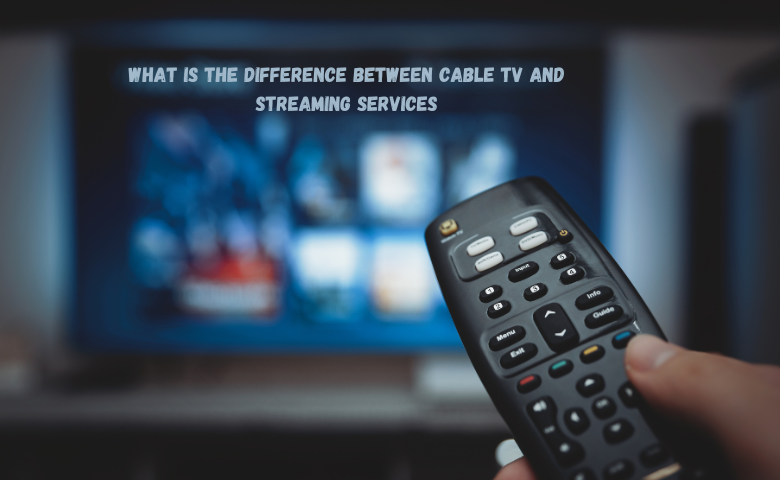- TV
How to Get Premium Channels with Your Cable TV Bundle?
Access to exclusive entertainment content is a priority for many viewers seeking a richer television experience. Premium chan...
Explore More
In entertainment, consumers have many options for accessing their favourite TV shows, movies, and sports events. Traditional cable TV and modern streaming services are two primary contenders in this arena. Understanding the differences between the two is crucial for consumers to make informed decisions about their entertainment choices. This comprehensive guide delve into the distinctions between cable TV and streaming services, helping you navigate the landscape to find the perfect Brand Name Internet Bundle for your viewing needs.
The fundamental difference between cable TV and streaming services lies in their content delivery methods. Cable TV utilizes traditional cable infrastructure to deliver content to subscribers' homes via coaxial cables. In contrast, streaming services provide content over the internet, allowing users to access TV shows, movies, and other media through internet-enabled devices such as smart TVs, streaming sticks, computers, and mobile devices.
Cable TV typically offers a fixed lineup of channels subscribers can access based on their cable package. These packages often include local channels, popular networks, premium channels, and speciality channels. In contrast, streaming services provide:
A more customizable experience.
Offering a wide range of on-demand content libraries.
Original programming.
Live TV options.
Subscribers can choose from various streaming platforms and subscription plans to access content tailored to their preferences.
The cost of cable TV subscriptions often includes fees for equipment rental, installation, and additional channel packages, making it a more expensive option than streaming services. Streaming services typically offer more flexible pricing structures, allowing users to choose from various subscription plans based on their budget and viewing preferences. Streaming services may offer free trials, discounts, and promotional offers to attract new subscribers.
Cable TV availability is often limited to specific geographic regions served by cable providers, requiring physical infrastructure for installation and maintenance. In contrast, streaming services are accessible to users worldwide, provided they have high-speed internet connectivity. This widespread availability allows users to access streaming content virtually anywhere, using various internet-enabled devices.
The portability and ease of use are two major selling points of streaming services. Unlike cable TV, which requires subscribers to adhere to fixed programming schedules, streaming services offer on-demand access to content, allowing users to watch their favourite shows and movies at their own pace and convenience. Additionally, streaming services often provide personalized recommendations, multi-device compatibility, and the ability to pause, rewind, and fast-forward content.
Cable TV broadcasts often include commercial breaks that interrupt programming, with subscribers having limited control over ad exposure. In contrast, many streaming services offer ad-free or limited-advertising options, allowing users to enjoy uninterrupted viewing experiences. Some streaming platforms may offer ad-supported free tiers with ads included in content, while others provide ad-free premium subscriptions for an additional fee.
The quality of service provided by cable TV and streaming services can vary based on network infrastructure, internet connectivity, and device compatibility. Cable TV typically offers reliable signal quality and consistent performance, but service interruptions may occur due to weather conditions or technical issues. Streaming services rely on internet connectivity, influencing performance by internet speed, network congestion, and device performance.
In conclusion, cable TV and streaming services offer distinct approaches to accessing entertainment content, each with advantages and limitations. Cable TV provides a traditional viewing experience with fixed channel lineups and scheduled programming while streaming services offer greater flexibility, convenience, and customization options. When choosing between the two, consumers should consider content selection, cost, availability, flexibility, ad experience, and quality of service to determine which option best suits their viewing preferences and lifestyle. Whether opting for a cable TV subscription or embracing the world of streaming, consumers can find the perfect brand-name Internet Bundle to meet their entertainment needs in today's dynamic media landscape.
Latest insights, tips, and updates from our experts.
Admin
What Is The Difference Between Cable Tv And Streaming Services